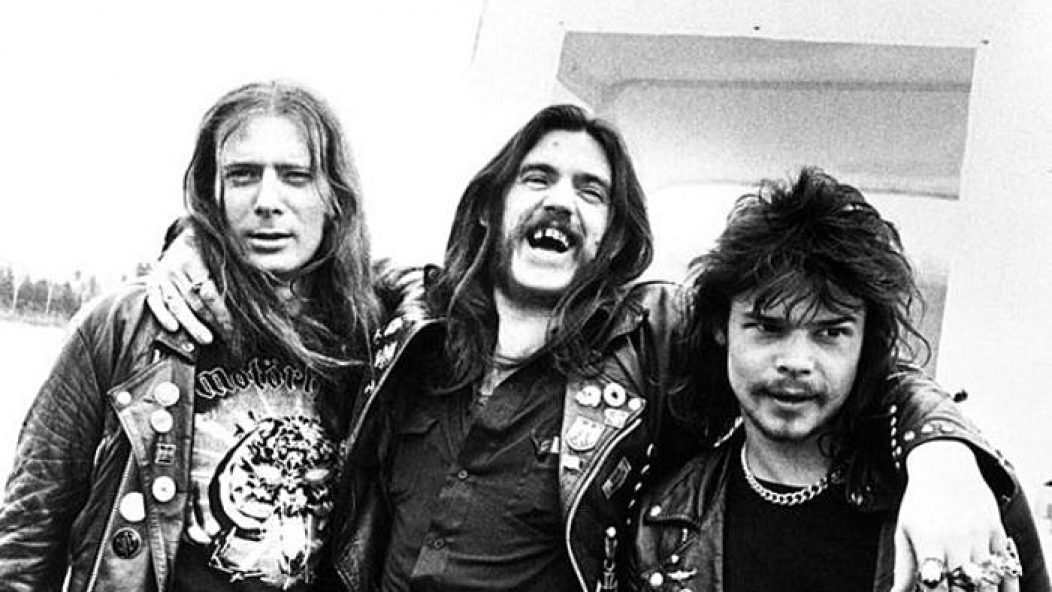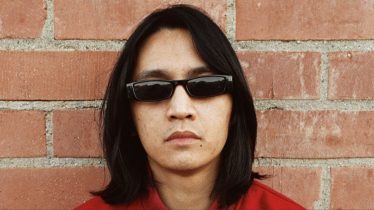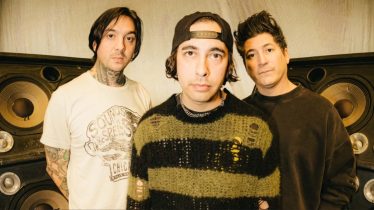
These 11 punk-rock drummers defined the 1980s
Welcome to Alternative Press’ selection of the 1980s’ 11 best punk drummers. One key factor happened that changed it, and the character of its musicianship: hardcore. ‘70s punk posited that Anyone Could Do It. While this was true on paper, some degree of basic musicianship was required to make truly great punk rock. This was especially true for ‘70s punk drummers. The Jerry Nolans, Clem Burkes and Topper Headons of the world elevated their bands — New York Dolls/Heartbreakers, Blondie and the Clash, respectively. How? With superior chops and a sense of swing, beyond whacking the snare hard on two and four. They played the drums. They did not merely keep time.
Hardcore, as vital and necessary as it was, unleashed a wave of skin smackers playing warp-drive polka beats. Not a lot of room for creativity there.
Read more: Check out these rare photos of punk legends, as captured by Jim Saah
Mind you, this was not true of hardcore’s earliest paradiddlers. Most of them were as creative as the genre got. But as more and more were inspired by its hyperactivity and gut-simplicity to take up arms (or rather, guitar and drums), the quality of the beat suffered. Hitting one-two/one-two/one-two/one-two at heart attack tempos does not make you Buddy Rich. The trick was to figure out how to actually come up with exciting beats that propelled a song, then execute them at Warp Factor Five. Basically, transcend the genre’s limitations.
But isn’t that the job of any great punk drummer — cutting across the music’s boundaries? Striving for excellence at whatever your skill set should be any musician’s goal. But a great rock ‘n’ roll band lives and dies by its drummer. Especially in hardcore.
Read more: How the ’80s punk-rock scene inspired Damon Way’s ever-evolving career
With these factors in mind, we’re presenting Alternative Press’ pick of the best ‘80s punk drummers. Please enjoy our custom playlist as you read.
Phil “Philthy Animal” Taylor
CLAIM TO FAME: Motörhead
SIGNATURE MOVE: The first time many heard Motörhead predated the speed metal they influenced. The initial thinking on the U.K. speed merchants led by ex-Hawkwind bassist Lemmy was that they were a punk band. Then you might see a photo and realize they were biker hippies with a serious evil streak! When U.K. hardcore arose — the Exploited, GBH and the rest of the Mohicans-and-studded-leather-jackets mob — much of it sounded like unskilled Motörhead with bad equipment, recorded poorly. A lot of that can be explained by Motörhead being older, experienced hard-rock musicians playing at amphetamine tempos. But it helped having Phil “Philthy Animal” Taylor on the drum throne. He propelled Lemmy and Fast Eddie Clarke on such classics as “Ace Of Spades” and the song that named them with his thermonuclear double kick drum attack and rolling tom work. Few drummers could sound good next to Taylor’s thunder.
BEST HEARD ON: Ace Of Spades
Don Bolles
CLAIM TO FAME: Germs
SIGNATURE MOVE: Though beginning in 1977, and their sole album G.I. being released in 1979, Los Angeles destructo-punk merchants the Germs had little impact beyond the city limits until the ‘80s. Their appearance in Penelope Spheeris’ supreme local scene documentary The Decline Of Western Civilization, released after singer Darby Crash’s 1980 death, was the key factor in spreading their rep. Many could not believe, hearing G.I.’s tight, powerful attack, that this was the same sloppy, inept band responsible for 1977’s “Forming.”
Much credit can be given to drummer Don Bolles. Legend has it he drove from his native Phoenix specifically to join the Germs, never having played drums in his life. Weirdos drummer Nicky Beat reportedly gave him a solitary drum lesson in the men’s room of L.A. punk palace The Masque, and Bolles passed his audition minutes later. You can’t tell by his rolling and tumbling beats across G.I., recorded a little over a year later. He’d thereafter lend his musicality to horror rockers 45 Grave and psycho-glamsters Celebrity Skin, among others.
BEST HEARD ON: G.I.
Lucky Lehrer
CLAIM TO FAME: Circle Jerks
SIGNATURE MOVE: More hardcore drummers should have listened to Lucky Lehrer, the sticksman who drove the original Circle Jerks lineup well beyond the speed barrier. He was so good, teen punk sensations Redd Kross rejected him for being “too good.” This so incensed guitarist Greg Hetson that he quit to start Circle Jerks with Lehrer, ex-Black Flag singer Keith Morris and bassist Roger Rogerson. Lehrer’s frenzied jazz drumming on early CJ’s albums Group Sex and Wild In The Streets really distinguished them. Hearing him rolling all over the kit, tackling complex beats and syncopations few hardcore drummers could execute, is unbelievably thrilling.
BEST HEARD ON: Wild In The Streets
Earl Hudson
CLAIM TO FAME: Bad Brains
SIGNATURE MOVE: None of Bad Brains’ membership is a musical slouch, by any stretch of the imagination. But Earl Hudson? It’s unreal how good he is. They all already had a grounding in jazz and funk prior to getting turned on to punk rock. But bassist Darryl Jenifer joked in Don Letts’ Punk: Attitude documentary that Hudson began cranking their tempos faster and faster to “hurry up and finish so he could go talk to some girl or something!” As Bad Brains embraced Rastafarianism, Hudson could stop on a dime from 375 MPH thrash and shift to creepy-crawl reggae tempos like it was as natural as sneezing. He’s possessed of some sort of genius.
BEST HEARD ON: Bad Brains
Rey Washam
CLAIM TO FAME: Big Boys, Scratch Acid
SIGNATURE MOVE: Teenage Rey Washam cut his teeth in OG Austin punk outfit Sharon Tate’s Baby in the early ‘80s before joining punk-funkateers Big Boys, then moving on to the big bad noise rock that was Scratch Acid. Big Boys might play straight-up punk rock one moment (“We’re Not In It To Lose”), funk the next (“Funk Off”), then drop some blistering 40-second hardcore (“Lesson”). Such genre-hopping required a certain rhythmic dexterity from a drummer. It served him well in Scratch Acid, where he’d pummel nine shades of tar out of a variety of time signatures on such tracks as “Cannibal.” It made Washam an underground MVP, manning the tubs for everyone from Didjits to Ministry in later years.
BEST HEARD ON: The Fat Elvis (Big Boys), The Greatest Gift (Scratch Acid)
Marky Ramone
CLAIM TO FAME: Ramones
SIGNATURE MOVE: Under his birth name of Marc Bell, he’d slammed the skins for early NYC hard rockers Dust and Richard Hell And The Voidoids, narrowly missing out on becoming a New York Doll in between. His experience and expert musicianship gave him an edge when he became Marky Ramone and replaced founding drummer Tommy in the Ramones in 1978. The difference was immediate: Marky really could play. It meant he could give them a lot more than that basic groove. On the Phil Spector-produced End Of The Century, Marky deputized for Wrecking Crew legend Hal Blaine on such Wall Of Sound pastiches as “Do You Remember Rock ‘n’ Roll Radio?” Tracks such as garage cover “Little Bit O’ Soul” saw him bring in some Keith Moon-ish fills and even drop in a cowbell. He gave the Ramones a musicality they’d never had.
BEST HEARD ON: End Of The Century
Hugo Burnham
CLAIM TO FAME: Gang Of Four
SIGNATURE MOVE: As punk seemingly, increasingly bent to hell in erasing any Black influences from rock ‘n’ roll, bands such as Gang Of Four steadfastly fed funk and disco back in. Hugo Burnham wielded a large hand in this. He was as nimble as Chic’s Tony Thompson on tracks such as “Not Great Men,” as pummeling as Moon on “Ether” and swung like Charlie Watts pounding out war toms on “Natural’s Not In It.” This meant Go4 issued the most danceable polemics this side of Karl Marx lecturing at Studio 54. Who’d have thought you could get an education on economic theory from a club banger?
BEST HEARD ON: Entertainment!
Sally Edroso
CLAIM TO FAME: The Honeymoon Killers
SIGNATURE MOVE: Almost-lost figures of Lower East Side noise rock from the mid-’80s, the Honeymoon Killers made a distinctive din that resembled the Cramps jamming with Einstürzende Neubauten on the sludgier parts of the Black Sabbath songbook. There was some intersection with American roots music — rockabilly, garage — that almost made them a predecessor of Pussy Galore and the Jon Spencer Blues Explosion. They’re now mostly notable for singer/guitarist Jerry Teel, who became a prime avant-garage figure in bands such as Chrome Cranks and Knoxville Girls and a first-call producer/engineer. But drummer Sally Edroso was shamefully underrecognized. She had a tribal thump that couldn’t be beaten and laid a metal trash can lid atop her bass drum for added crash and clang. She went on to STP and Bewitched.
BEST HEARD ON: Sing Sing (1984-1994)
Bill Stevenson
CLAIM TO FAME: Descendents, Black Flag
SIGNATURE MOVE: Bill Stevenson distinguishes himself by having drummed — and exceptionally well, at that — for two of Southern California’s greatest punk bands. And they couldn’t be more opposite from one another. Descendents, of course, practically drew the blueprint for American punk-pop. But what none of their many acolytes can replicate is Stevenson’s knack for neck-snapping time signature shifts, which suggest he might’ve spent as much time listening to jazz as Buzzcocks or Ramones. As hardcore dawned, he brought that into their stew as well. Then he joined Black Flag as they transitioned from grinding hardcore into a more metallic zone. Though he had to be drilled into playing slower by BF mastermind Greg Ginn (likely because he never gave up consumption of the famed “bonus cup”), it’s hard to imagine their later sludge metal without Stevenson’s muscular drumming.
BEST HEARD ON: Milo Goes To College (Descendents), Slip It In (Black Flag)
Nick Knox
CLAIM TO FAME: The Cramps
SIGNATURE MOVE: The longest-running of the string of drummers passing through punkabilly garage ghouls the Cramps, Nick Knox was also the most notable. He managed to make two and four swing harder than anyone not named Charlie Watts. Knox kept things simple, never allowing them to get boring. He barely used cymbals, aside from the occasional crash, and did not seem to own a hi-hat. Instead, Knox beat the shit out of his kick and snare and tom-thumped like he was some resurrected tribal pounder. His casual brutality powered such Cramps classics as “New Kind Of Kick” and “Human Fly.”
BEST HEARD ON: Off The Bone
Dan Peters
CLAIM TO FAME: Mudhoney
SIGNATURE MOVE: Dan Peters came to Mudhoney — the band who built Sub Pop — from Bundle Of Hiss, another proto-grunge outfit he’d joined at age 15. His leaden, tom-heavy funk distinguished Mudhoney from the first notes of “Touch Me I’m Sick.” He became noted for his propulsive rolls and fills, and for an untutored polyrhythmic sense. Whether he switches up the beat all over “Twenty Four,” stumbles across his kit in perfect time on “This Gift” or makes like Bo Diddley’s drummer playing hardcore on “Flat Out Fucked,” Peters may be the most inventive percussionist to ever emerge from the grunge scene.
BEST HEARD ON: Superfuzz Bigmuff










